The fate of the Zaporozhye Cossacks
In previous articles (Don Cossacks and Cossacks и Cossacks: on land and at sea) we talked a little about stories the emergence of the Cossacks, its two historical centers, some differences between the Cossacks of the Don and Zaporozhye regions. And also about the sea campaigns of the Cossacks and some land battles. We will now continue this story.
Perhaps the most powerful during the entire existence of the Sich was at the time of Bohdan Khmelnytsky. The Zaporozhians, albeit in alliance with the Crimean Tatars, at that time could fight on equal terms with the rather powerful Commonwealth and even seize the territory of the Kiev, Bratslav and Chernigov provinces. A new state appeared, which the Cossacks called the "Zaporozhian Army", but it is better known as the "Hetmanate".
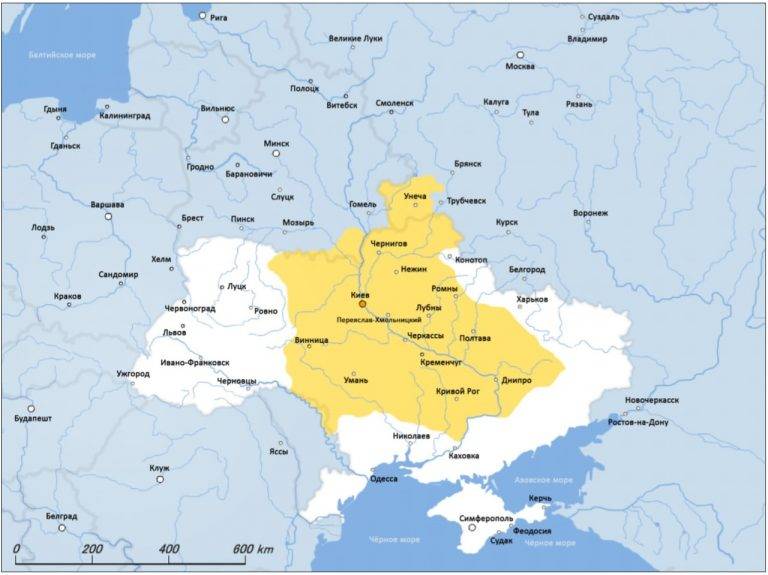
In its best years, this state included the territories of the present Poltava and Chernigov regions, some areas of the Kiev, Cherkassk, Sumy regions of Ukraine and the Bryansk region of the Russian Federation.
"Hetmanate," Russian Flood "and Ruin
Bogdan Khmelnitsky, as you know, managed to persuade the Russian government of Alexei Mikhailovich Romanov to accept the Cossacks into citizenship. This decision was not easy for Moscow, and Khmelnitsky's first appeal, received in 1648, remained unanswered. When new requests followed, Alexei Mikhailovich did not want to take responsibility and convened the Zemsky Sobor, which was destined to become the last in the history of Russia.
On October 1, 1653, the Council decreed:
That is, the main reason and the main reason for the intervention turned out to be not the desire to increase the territory, and especially not the issues of some benefit, but humanitarian considerations - the desire to help fellow believers.
On January 18, 1654, the famous Pereyaslavskaya Rada took place, at which a decision was made to transfer to the jurisdiction of Moscow. And Russia had to fight for 13 years with the Poles, who often call this war the "Russian Flood". After the death of Bohdan Khmelnitsky, a civil war began in the Hetmanate between the pro-Russian and Polish parties, which went down in history as the Ruin. Hetmans Yuri Khmelnitsky, Ivan Vygovsky, Pavel Teterya, Yakim Skamko, Ivan Bryukhovetsky, Cossack colonels, the foreman grappled with each other, now concluding alliances, then tearing them apart, ravaging the lands and calling for help either from Poles or Tatars. Anzhej Pototsky, who founded the city of Stanislav (now - Ivano-Frankivsk), writes about the events of those years:
The Andrusiv truce of 1667 consolidated the split in the failed state of Bohdan Khmelnitsky: the border passed along the Dnieper. Until 1704, its fragments were controlled by two hetmans - the left and right banks of the Dnieper. But on the right bank the power of the hetmans was soon eliminated, and some territories of the left bank Ukraine, the center of which was Kiev, began to be called the hetmanate. Mazepa's successor Ivan Skoropadsky became the last elected hetman of the Zaporozhye Army in the Rada, but the title itself was abolished only in 1764. Kirill Razumovsky, who at that time held the post of hetman, received the rank of field marshal in return. And in 1782, the centenary-regimental administrative structure of the former Hetmanate was abolished.
The Zaporozhian Cossacks now served Russia, together with the Russian troops they went to the Chigirinsky (1677-1678), Crimean (1687 and 1689) and Azov (1695-1696) campaigns.
Koshevoy Ataman Ivan Serko
Especially famous at that time was the koshevoy ataman of the Chertomlyk Sich (he was elected to this position 20 times) Ivan Serko (Sirko) - he is usually called the author of the legendary letter to the Turkish sultan. We can see this ataman in the famous painting by I. Repin; the governor-general of Kiev M.I.Dragomirov considered it an honor to become a model.
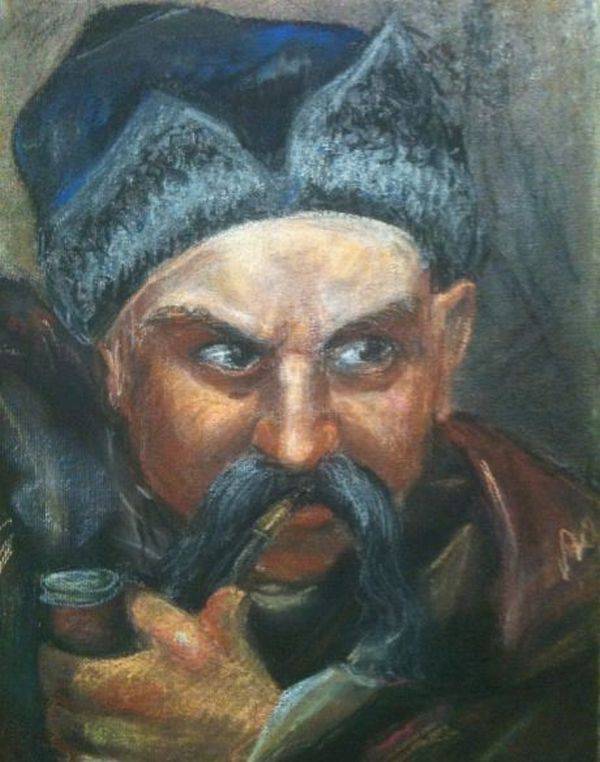
Ivan Serko fought a lot: with the Crimea, with the Turks, in Ukraine (against the hetman of Right-Bank Ukraine Petro Doroshenko and together with him, for which he was exiled to Tobolsk after his capture, but was forgiven). In 1664, his actions provoked an anti-Polish uprising in western Ukraine - justifying himself, he wrote to the king:
Unlike his predecessors, Serko went to the Crimea not on seagulls, but at the head of a foot army. The most famous was the campaign of 1675. His army entered the Crimea through Sivash and captured Gezlev, Karasubazar and Bakhchisarai, and then defeated the Khan's army at Perekop. It was then that Serko tried to take several thousand Christian captives out of the Crimea, and when some of them wanted to return back, the angry chieftain ordered to kill them.
Ivan Serko was the last of the great koshevy chieftains: the time of the Cossacks was already running out, great victories were in the past. They could still fight the Tatars and Turks, but had little chance of meeting the correct European army, turning into auxiliary light cavalry.
However, the habit of self-righteousness did not leave the Cossacks, and the main reason for the Russian-Turkish war of 1768-1774 is considered their attack on the Turkish city of Balta.
Decline and degradation of the Zaporizhzhya Sich
The fall of the Sich was accelerated by the betrayal of Hetman Mazepa in 1709 (Konstantin Gordeenko was then the kosh chieftain of the Cossacks). Colonel Pyotr Yakovlev took the Chertomlyk Sich and destroyed its fortifications.
The surviving Cossacks tried to gain a foothold in the Kamenskaya Sich (downstream of the Dnieper), but were expelled from there as well. The New Sich (Aleshkovskaya) ended up on the territory of the Crimean Khanate: the Zaporozhians who call themselves Orthodox swore allegiance to the Muslim Khan without the slightest remorse. The last (eighth in a row) Pidpilnyanskaya Sich appeared in 1734 after the decree on the amnesty of the Cossacks, signed by Anna Ioannovna. It was located on a peninsula formed by the bend of the Podpolnaya River. Now this territory is in the flooding zone of the Kakhovskoye reservoir.
7268 people came here and built 38 kurens. The settlement of Hasan-bash grew up near the Sich, in which craftsmen and merchants lived.
This was already a completely different Sich: the Cossacks now did not hesitate to start arable land, on which, however, they did not work, but hired workers. They were also engaged in cattle breeding. Many now had wives and children. The family Cossacks, however, paid a special tax - "smoke", did not have the right to vote in the Rada and could not be elected to the chieftain. But it seems that they did not strive for this, preferring the measured life of large landowners: even in military campaigns, some of the Cossacks began to send mercenaries instead of themselves.
The inhabitants of the Pidpilnyanskaya Sich were divided into three groups. The richest and most influential Cossacks were called significant. In 1775, the Zaporozhye foreman and significant Cossacks owned 19 townships, 45 villages and 1600 farms in the surrounding lands.
The Cossacks, called "siroma" (the poor), had no property (except weapons and clothing), but received a salary for being in constant readiness for a campaign or defense of the Sich.
But most of all there were "golutvs" - these had neither the rights nor the weapons and worked for the significant Cossacks. Social contradictions in the last Sich were so high that in 1749 and 1768. the uprisings of the Syroma and Golutva had to be suppressed by the Russian troops.
Liquidation of the Pidpilnyanskaya Sich
In June 1775, this Sich, the last of the Zaporozhye, was liquidated by order of Catherine II.
The fact is that after the conclusion of the Kyuchuk-Kaynardzhiyskiy peace with Turkey in 1774, the threat from the south practically disappeared. The Commonwealth was in a deep crisis and did not pose a threat to Russia. Thus, the Sich lost its military significance. But the Zaporozhye foreman, not realizing that the situation had changed, continued to irritate the tsarist government, accepting fugitive peasants, the Haidamaks of the Right-Bank Ukraine (which caused discontent in the Commonwealth), defeated Pugachevites and simply "dashing people":
(From the decree of Catherine II.)
In addition, the Cossacks hindered the settlement of the colonists on the territory they independently occupied, which they called the Great Meadow. In the so-called Slavic Serbia, the territory between the Bakhmut, Seversky Donets and Lugan rivers, it came to direct clashes.
Peter Tekeli was entrusted with executing the imperial decree, who managed to quietly bring the troops and take the Sich fortifications without firing a single shot. This is a rather eloquent evidence of the degradation of the fighting skills of the Sichs, who managed to oversleep their capital. “We practiced the performance of a dream,” Tekeli found it possible to joke in his report.
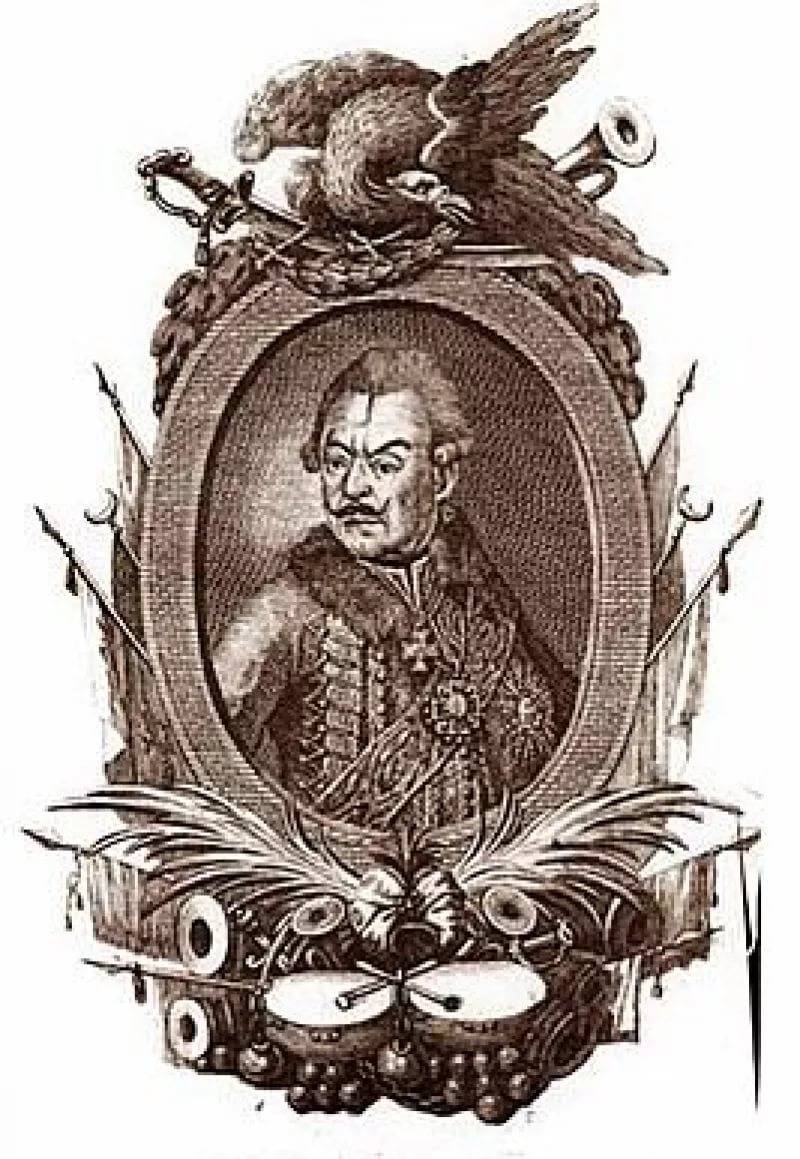
Only the koshevoy Peter Kalnyshevsky, the clerk Globa and the judge Pavlo Golovaty, who were involved in ties with the Turks, were repressed. The rest of the Cossack foreman and significant Cossacks did not suffer - they kept their lands and received titles of nobility. Ordinary Cossacks were asked to go to serve in the hussars and pikiners' regiments, but strict military discipline did not attract the Cossacks.
Cossacks beyond the Danube
The most implacable Cossacks left for the territory of the Ottoman Empire, there were about 5 thousand of them. Initially, they settled in the village of Kuchurgan in the lower reaches of the Dniester. When a new Russian-Turkish war began (1787-1792), some of these fugitives returned to Russia. Those who remained after the end of the war were resettled to the Danube Delta region, where they built the Katerlec Sach. Here they fought to death with the Nekrasov Cossacks who left the Don after the defeat of the uprising of Kondraty Bulavin. The Nekrasovites burned a new Sich twice, so the Cossacks had to go to Brailovsky Island. But in 1814 the Cossacks also burned the capital of the Nekrasovites - Verkhny Dunavets.
In 1796, a second group of Cossacks returned to Russia - about 500 people. In 1807, two more detachments of the Cossacks adopted Russian citizenship, of which the Ust-Buzh Cossack army was originally formed, but after 5 months they were resettled to the Kuban. In 1828, during the new Russian-Turkish war, the Trans-Danube Zaporozhian Cossacks split up again: some left for Edirne, the rest, led by the Koshev Ataman Gladky, went over to the side of Russia. At first, they formed the Azov Cossack army, located between Mariupol and Berdyansk. But in 1860 they were also moved to the Kuban.
Black Sea Cossacks
Other Cossacks in 1787 became part of the new Cossack army - the Black Sea (“The Army of the Faithful Black Sea Cossacks”), which was initially deployed between the Bug and Dniester. This happened thanks to the help of Grigory Potemkin (who for some time lived in Sich under the name of Gritsko Nechez). During the famous trip of Catherine II to the newly acquired southern provinces, the prince organized a meeting of the empress with the former Zaporozhye foremen, who turned to her with a request to restore the Zaporozhye army. After receiving a positive answer, Potemkin instructed Sidor Bely and Anton Golovaty (both at that time had the rank of Major Seconds) "to collect hunters, both horse and foot for boats, from those who settled in this governorship who served in the former Sich Zaporizhzhya Cossacks."
Potemkin entrusted the general command to Sidor Bely, who became koshev ataman, the cavalry units were headed by Zakhary Chepega, rowing ships (the famous seagulls) and the infantrymen stationed on them - Anton Golovaty.
It was among the Black Sea Cossacks that the units of the famous plastuns were organized. In fact, the first scouts appeared in the Zaporozhye Sich as scouts and saboteurs, but the Cossack freemen did not create permanent regular combat units out of them.
During the next Russian-Turkish war, the Black Sea men distinguished themselves in the Liman sea battle near Ochakov, participated in the capture of the Khadzhibey fortress (Odessa was founded in its place) and the Berezan island. In the future, the Black Sea flotilla the seagulls participated in the capture of the Danube fortresses of Isakcha and Tulcea, and the Cossacks themselves - in the storming of Izmail. During this war, Sidor Bely was killed. As a sign of trust and gratitude to the former Cossacks, the banners and other regalia captured in the Sich were returned, and Grigory Potemkin even accepted the title of hetman of the Cossack troops of Yekaterinoslav and the Black Sea and went down in history as the last hetman.
Before dying, Potemkin handed over Taman and the Kerch Peninsula to the Black Sea people, but he did not have time to legally formalize this act. After his death, a delegation headed by military judge A.A. Golovaty was sent to St. Petersburg to secure the lands given to him.
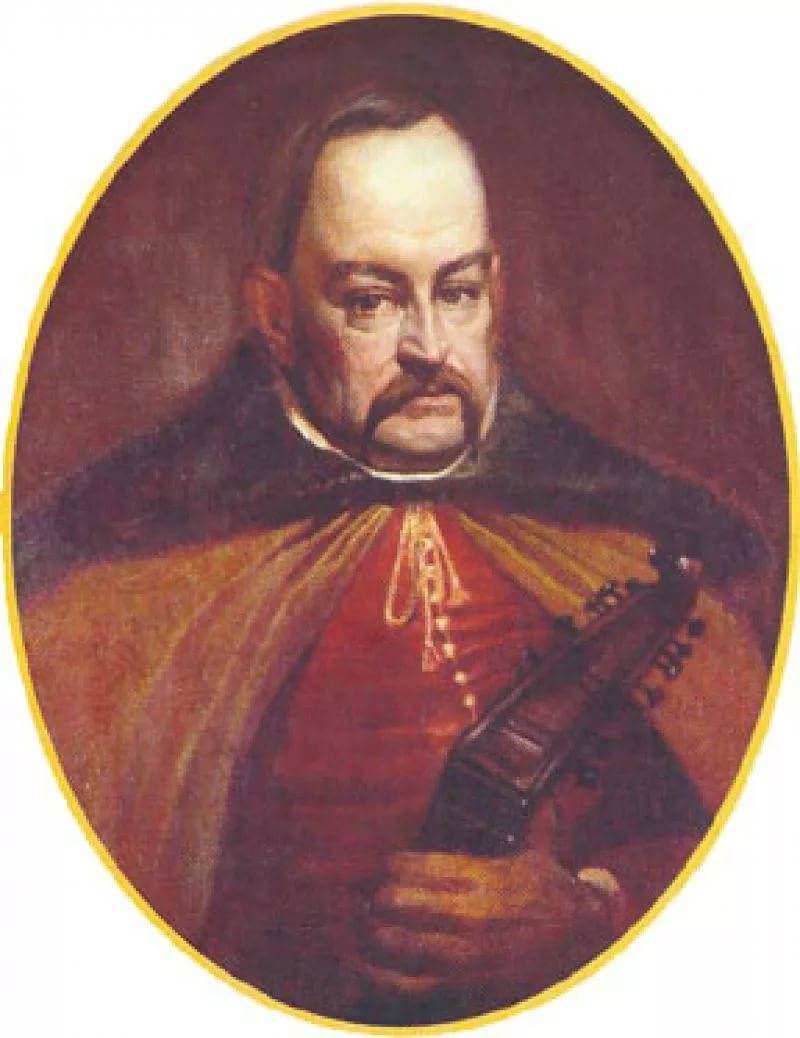
During the coronation of Catherine II, Holovaty was already introduced to the new empress - he played the bandura for her and sang a folk song. On another occasion he visited St. Petersburg and saw Catherine as part of the Cossack delegation in 1774. Since, in addition to the territories granted by Potemkin, the delegation also asked for land on the right bank of the Kuban, the negotiations were not easy, but ended in success. On June 30, 1792, the former Cossacks were transferred
The path to the Kuban of the Black Sea Cossacks
The resettlement of the Cossacks was carried out in several stages and in different ways: sea and land.
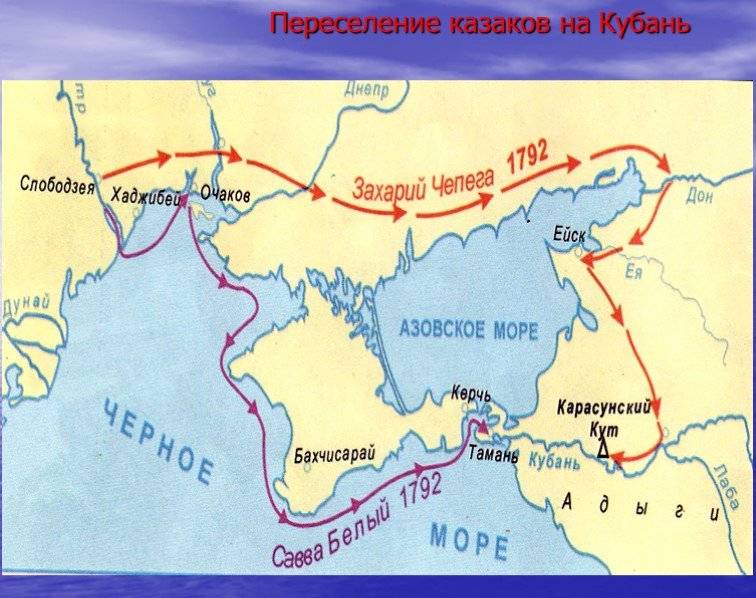
The first group sailed to Taman from the Ochakovsky estuary on August 16, 1792. The Cossack squadron of 50 boats and 11 transport ships was led by the brigantine "Annunciation" of the naval brigadier PV Pustoshkin and guarded by several "corser ships". These Black Sea men were headed by the Cossack Colonel Savva Bely. On August 25, they safely landed on the banks of the Taman.
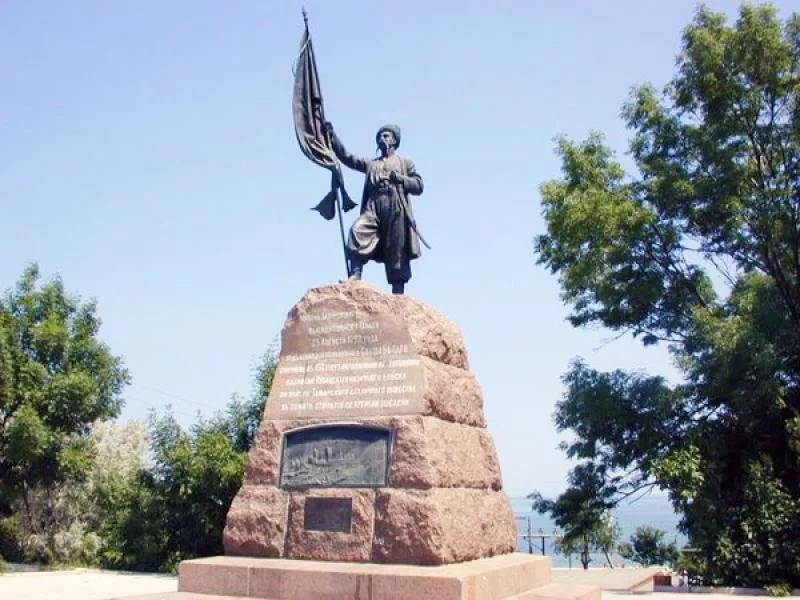
The second - a cavalry group, under the command of the military chieftain Zakhary Chepegi, left on September 2, 1792 and reached the borders of the new military land on October 23.
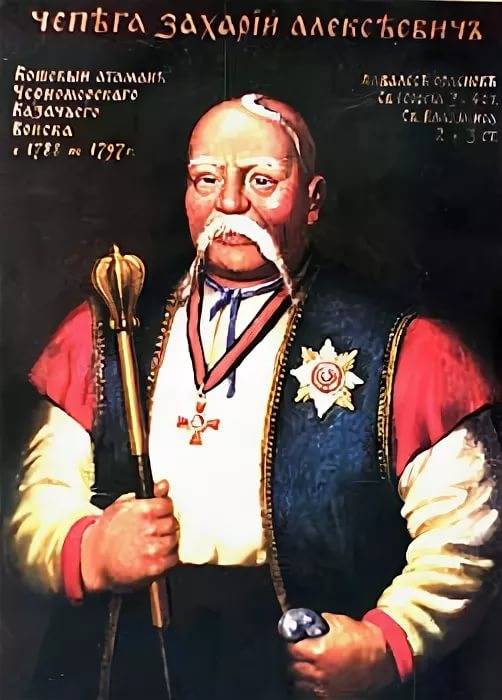
Those who remained the following year, also by land, were led by Golovaty.
How many Cossacks came to the Kuban? The numbers vary considerably. A. Skalkovsky, for example, claimed that we are talking about 5803 Cossacks. M. Mandrika cited the figure of 8200 people, I. Popka spoke about 13 thousand combatant Cossacks and about 5 thousand women. P. Korolenko and F. Shcherbina counted 17 thousand men only.
In the report drawn up for the Tavrichesky governor S.S.Zhegulin on December 1, 1793, the Black Sea Cossack army still included 6 horsemen and 931 infantrymen.
A year later, 16 people were counted, including 222 fit for service. But the Cossacks among them were 10 people. Among the rest there were immigrants from Little Russia, "zholnery who left the Polish service", "the state department of the villagers", people of "muzhik rank" and "no one knows what rank" (apparently, fugitives and deserters). There were also a number of Bulgarians, Serbs, Albanians, Greeks, Lithuanians, Tatars and even Germans.
In 1793, the capital of the "Chernomoria" was founded - Karasun (at the confluence of the river of the same name into the Kuban), which was soon renamed Yekaterinodar (from 1920 - Krasnodar). In 1794, a lot was cast at the military council, according to which new lands were divided between 40 kurens.
From 1801 to 1848 the government also resettled to the Kuban more than one hundred thousand Cossacks of the Azov, Budzhak, Poltava, Yekaterinoslav, Dnieper and Slobod regiments - the Cossacks were no longer needed here. They also became the Black Sea, and then - the Kuban Cossacks. Those of the Cossacks that nevertheless remained on the territory of Ukraine, avoiding resettlement from a well-fed and peaceful province to the troubled lands of the Kuban, in fact, have not been such since then, and quickly merged with the general mass of inhabitants. Therefore, 1848 can be considered the last year of the existence of the Cossacks in Ukraine (recall that in 1860 the last Trans-Danube Cossacks were also resettled to the Kuban, who originally formed the Azov army on the territory of Novorossia, which is now part of Ukraine).
The population of the new Cossack army was also replenished with fugitive peasants, whom the Cossacks who needed workers willingly hid from the authorities.
One of the conditions for donating the Kuban land was the protection of a section of the line stretching from the Black Sea to the Caspian Sea along the Kuban and Terek. The share of the new army was 260 versts, along which about 60 posts and cordons and more than a hundred pickets were set up.
Kuban Cossack army
In 1860, the Cossack troops from the mouth of the Terek to the mouth of the Kuban were divided into two troops: Kuban and Terskoe. The Kuban army, along with the former Black Sea troops, included two more regiments of the linear Cossack army (linemen). The Kuban regiment, located in the middle reaches of this river, consisted of the descendants of the Don and Volga Cossacks, who moved here in the 1780s. The Khopyor regiment, located in the upper Kuban, was represented by the Cossacks who previously lived between the Khoper and Medveditsa rivers. Later he was transferred to the North Caucasus, fought there with the Kabardians and founded the city of Stavropol. In 1828, these Cossacks returned to the Kuban.
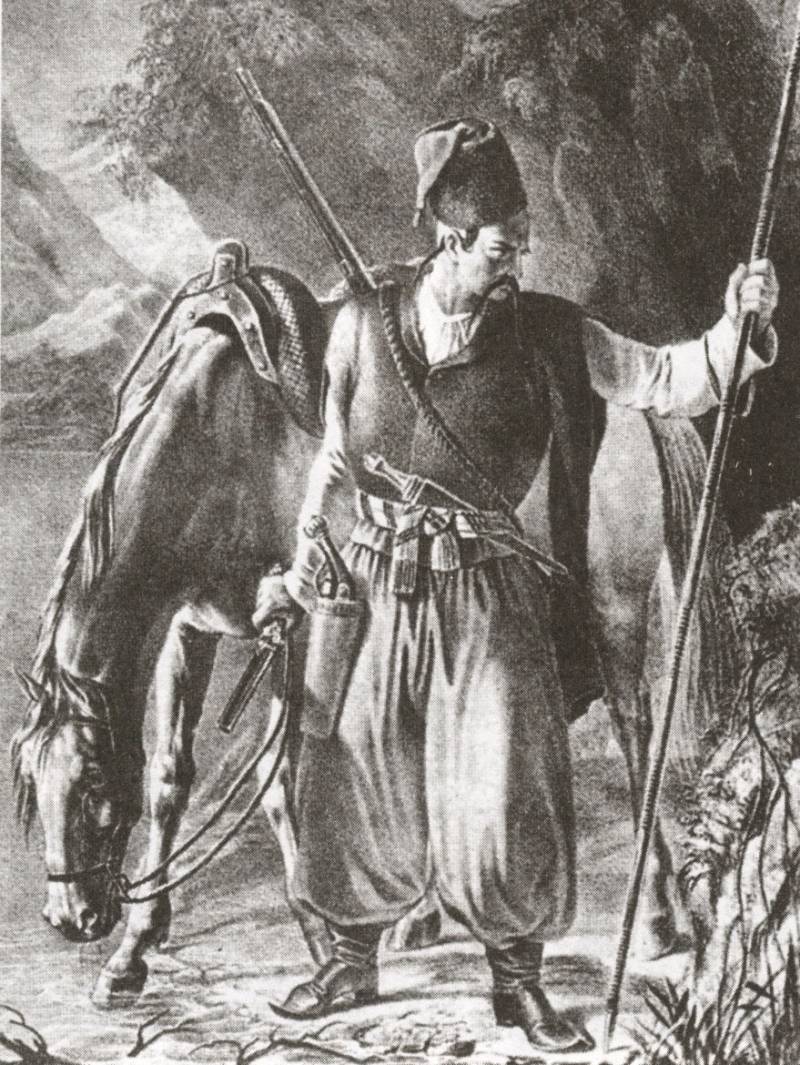
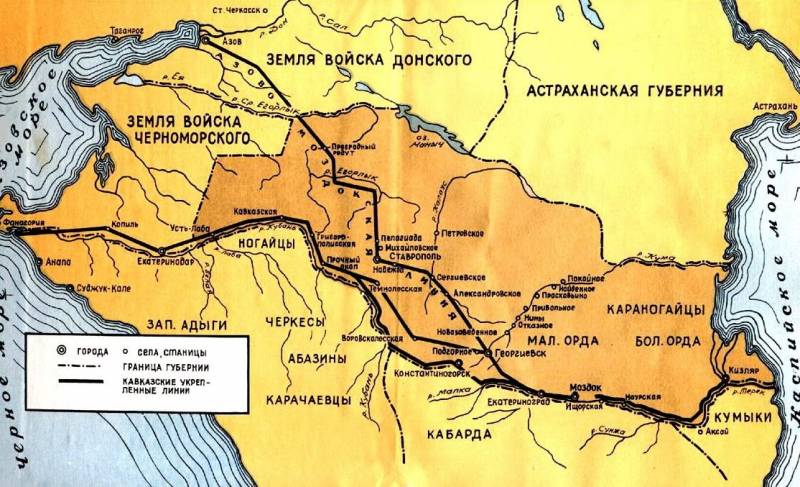
Information